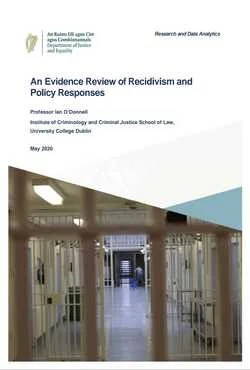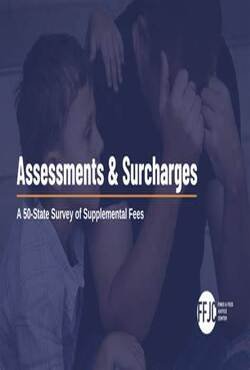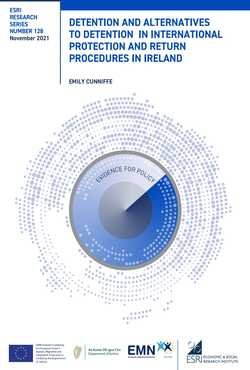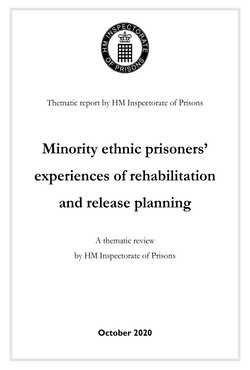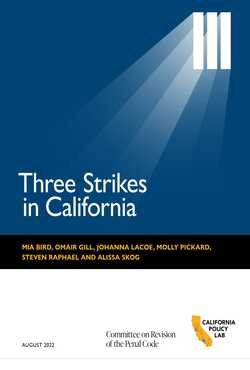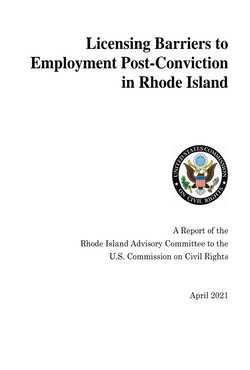The 1970's have seen almost every aspect of parole decisionmaking come under sustained legal and political attack. Within a few years following the 1972 Morrissey decision, court rulings were handed down requiring a variety of due-process procedures for such matters as rescinding an unexecuted parole, increasing a term, granting a parole, and requiring disclosure of records. At the same time, parole boards, as principal actors in the sentencing process, were a target of political attack by legislators, leading academicians, criminal justice officials, and the public for inequities and lack of sentencing certainty produced by release decisions characterized as capricious and arbitrary. As a consequence of these pressures, legislators have taken action over the last 4 years to constrict the amount of discretion exercised by parole boards in many different areas, including decisions to parole, due-process procedures governing parole hearings and revocations, and disclosure of certain records. State legislatures have been especially concerned with the issue of sentencing. Statutes designed to modify, replace, or selectively prohibit indeterminate sentencing have dominated criminal justice legislative agendas. As 1980 closed, 12 States had passed various types of determinate sentencing laws to replace indeterminate statutes. Over the last 4 years, five States have created contract parole programs, and five passed laws establishing specific parole guidelines, in each case an effort to improve the exercise of indeterminancy. The most common response to dissatisfaction with paroling practices has been the passage of some form of mandatory sentencing. Thirty-seven States enacted this type of legislation, which prohibits indeterminate sentencing for specified categories of offenses/offenders. The trends for the near future are suggested by recent legislative history: States will continue to pass laws to limit the use of discretion by parole boards
By Ian O’Donnell
The Evidence Review of Recidivism and Policy Responses examined:
(i) factors underpinning recidivist and prolific offending behaviour;
(ii) public policy interventions that tackle recidivism and prolific offending; and
(iii) effectiveness of these interventions and likelihood of successful transplantation to an Irish context.
The review findings concluded that:
Suspended sentences or community service can be more effective in terms of reducing recidivism than short terms of imprisonment.
Planned and structured early release, including parole, may reduce recidivism.
Perception of fairness may have an impact on likelihood of recidivism. A perception of procedural unfairness can lead to alienation, resistance and noncompliance whereas a belief that one has been treated fairly may reduce the likelihood of future offending.
There appears to be a significant treatment effect associated with cognitive behavioural interventions delivered both in community and custodial settings.
Dublin: Irish Department of Justice and Equality, 2020. 104p.
By Louise Kennefick and Eoin Guilfoyle
The Community Service Order (‘CSO’) was introduced to Ireland in 1983 as an alternative to custody in order to address concerns relating to prison overcrowding and rising crime rates. International consensus on the null to criminogenic effects of prison on reoffending rates has renewed calls for decarceration. At the same time, the evidence reviewed shows that community service results in lower recidivism rates and more positive outcomes for those who have offended and their community, when compared with short-term prison sentences. Notwithstanding these findings, the CSO remains underutilised in this jurisdiction. The purpose of this review is to evaluate research findings and knowledge from peer-reviewed journals, national and international policy materials, reports, and publications relating to community service spanning the key areas of strategic innovation, operational practice, legal structure, impact, evaluation and related developments. The recommendations contained in this report are intended to provide broad guidance to the Probation Service in the development of community service in Ireland, and to highlight key areas that require further investigation.
Dublin: Irish Probation Service, 2022. 108p.
By The Fines and Fees Justice Center
Fees are imposed on people accused of offenses in criminal, juvenile, municipal, and traffic courts around the country and are used to fund all types of court- or government-related programs, activities, or functions. For decades, justice fees have been a way that states raise revenue through a system of hidden taxes.1 Among these court-imposed costs, there is a particularly pernicious category of fees that are imposed on people simply because they are involved with the justice system. Whether they are called administrative assessments, surcharges, court costs, privilege taxes, docket fees, or something else, the one thing they have in common is that they are imposed in nearly every criminal, traffic, or local ordinance case—regardless of the offense, sentence, or specific circumstance of the particular case. Most are imposed only after conviction, but others, like docket fees, are imposed even if a person is acquitted or the charges are dismissed.2 For the purposes of this report, we collectively call these fees “assessments and surcharges,” recognizing that they may go by other names in different jurisdictions. Ultimately, these are “catch all” fees that legislatures impose to collect money exclusively from people drawn into a state’s various justice systems.3
New York: Fines and Fees Justice Center, 2022. 28p.
By Emily Cunniffe
Detention and alternatives to detention can be used for immigration-related purposes in Ireland. Detention takes place in Garda Síochána stations and prisons. Throughout 2019, 477 people were detained in Irish prisons for immigration-related reasons, reducing to 245 people in 2020 during the COVID-19 pandemic. Alternatives to detention, such as regularly reporting to a Garda station, however, tend to be used more routinely and in the first instance.
This study presents a comprehensive review of legislation and practice on detention and alternatives to detention in international protection and return
procedures in Ireland. It is based on the Irish contribution to a European Migration Network (EMN) report comparing the situation in EU Member States. Immigration detention in the EU and the UK has been the subject of considerable academic research; however, there has been comparatively less research on the situation in Ireland, particularly regarding alternatives to detention.
Dublin: The Economic and Social Research Institute. 2021. 109p.
By Hindpal Singh Bhui, Rebecca Stanbury. et al.
Black and minority ethnic (BME) groups are greatly overrepresented in the prison population: as of March 2020, 27% of prisoners were from a BME background, compared with only 13% of the general population. People who identify as ‘black’ are imprisoned at an even more disproportionate rate: they comprise only 3% of the general population but 13% of adult prisoners (UK Prison Population Statistics, 2020). HM Inspectorate of Prisons (HMI Prisons) inspection reports consistently show that BME prisoners report worse experiences and outcomes than white prisoners across a wide range of indicators covering most areas of prison life. The Lammy Review (published in 2017 and subtitled ‘An independent review into the treatment of, and outcomes for, Black, Asian and Minority Ethnic individuals in the Criminal Justice System’) drew extensively on HMI Prisons’ evidence and other sources to highlight under-identification of BME prisoners’ vulnerabilities, widespread feelings among BME prisoners of being treated less well than white prisoners and shortcomings in important systems of redress and internal assurance. People from a BME background have less trust in the criminal justice system than white people and worse perceptions of the system’s fairness, whether or not they have had any significant involvement in it (Lammy, 2017). The reasons for these perceptions are complex and under-researched, and result not just from criminal justice processes, but also from long-term patterns of social inequality and prejudice (Bhui, 2009). Developing a greater understanding of the perceptions of prisoners and disproportionalities in the prison system, and finding ways to address them, is an important task for those working in prisons. This thematic review is a small but original contribution to that effort. We will consider carefully how the findings might be built upon in future work. Little has been written on BME prisoners’ experiences of offender management and resettlement services, and there is very limited work on the increasingly influential concept of ‘rehabilitative culture’ and the degree to which efforts to achieve it have taken account of the specific experiences of BME prisoners.
London: Her Majesty’s Inspectorate of Prisons, 2020. 58p.
By Mia Bird, Omair Gill, Johanna Lacoe, Molly Pickard, Steven Raphael and Alissa Skog
Criminal sentences resulting in admission to a California state prison are determined by both the nature of the criminal incident as well as the criminal history of the person convicted of the offense. Cases with convictions for multiple offenses may lead to multiple sentences that are either served concurrently or consecutively. Characteristics of the offense (such as the use of a firearm) or aspects of the person’s criminal history (such as a prior conviction for a serious or violent offense) may add to the length of the base sentence through what are commonly referred to as offense or case enhancements, respectively. California’s Three-Strikes law presents a unique form of sentence enhancement that lengthens sentences based on an individual’s criminal history. Consider an individual with one prior serious or violent felony conviction (one “strike”) who is subsequently convicted of another felony. Under Three Strikes, the sentence for the subsequent felony will be double the length specified for the crime regardless of whether the new conviction is for a serious or violent offense. For an individual with two prior violent or serious felony convictions, a third conviction for a serious or violent felony would receive an indeterminate prison term of at least 25 years to life, with the exact date of release determined by the Parole Board.
Los Angeles: California Policy Lab, 2022. 45p.
By Santiago Tobón
I study the effects of prison quality on recidivism using individual-level data from Colombia. To estimate causal effects, I leverage the quasi-random assignment of inmates to newer, less crowded, and higher service prisons. For inmates assigned to newer facilities, I find that the probability of returning to prison within one year is 36% lower. Criminal capital, access to rehabilitation programs, and negative prison experiences—which could trigger changes in intrinsic preferences over illegal occupations—seem to be important mechanisms. The program led to substantial welfare gains, even when assuming a low social cost per crime.
Preprint, 2020. 47p. Published in Review of Economics and Statistics, 2022.
By Michelle Butler, Gavin Slade and Camila Nunes Dias
This paper finds qualified support for the use of Skarbek’s (2011, 2014) governance theory to understand the emergence of prison gang-like groups in Kyrgyzstan, Northern Ireland and Brazil. However, Skarbek’s (2011, 2014) governance theory has little to say about how many prison gangs emerge and how they organise comparatively outside the US context. This paper argues that variation in the number of gangs and their monopolization of informal governance can only be explained by considering importation and deprivation theories alongside governance theories. These theories factor in variation in prison environments and pre-existing societal divisions imported into prison, which affect the costs on information transmission and incentives for gang expansion. In particular, the paper pays attention to the wider role social and political processes play in influencing whether monopoly power by prison gangs is supported and legitimized or not.
Trends Organ Crim (2022) 25:427–442
By The U.S. Commission on Civil Rights, Rhode Island Advisory Committee
The Rhode Island Advisory Committee to the U.S. Commission on Civil Rights submits this report regarding licensing as a barrier to employment post-conviction in Rhode Island. The Committee submits this report as part of its responsibility to study and report on civil rights issues in the state. The contents of this report are primarily based on testimony the Committee heard during an in-person public meeting held on April 30, 2019, as well as virtual meetings held on May 20, 2020 and June 30, 2020. The Committee also included related testimony submitted in writing during the relevant period of public comment. The following report begins with a summary of the testimony the Committee received on this topic. It then identifies primary findings as they emerged from this testimony. Finally, it makes recommendations for addressing related civil rights concerns. While other important topics may have surfaced throughout the Committee’s inquiry, matters that are outside the scope of this specific civil rights mandate are left for another discussion.
Washington, DC: U.S. Commission on Civil Rights, 2021. 38p.



